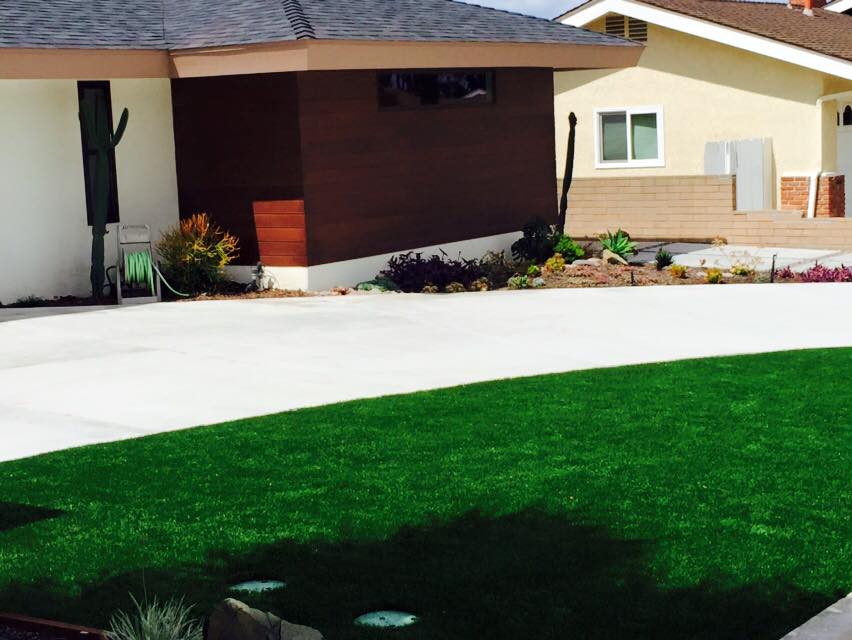Few homeowners have the time or the talent to create a perfect, natural green lawn. If you buy astroturf, you’ll have a problem-free splash of green, and the exterior of your home will look beautiful all year round.
You should know a bit about synthetic lawns before launching your landscaping project. We’ve put together a basic guide to get you started.
1. What Is Artificial Lawn?
Artificial lawn is durable, heavy-duty carpeting made of synthetic materials that will make you want to spend all your time in the garden.
You’ve all seen the astroturf on sports fields. So you know that the green, UV resistant, polyethylene tufts of grass look realistic, and always pristine. There are two different types of artificial grass sewn into the PE backing.
Below the tufts layer, there is the innovative thatch layer, which is usually made of polypropylene, polyethylene, or nylon. The thatch layer gives the turf added bounce and a natural feel when you walk on it. The tufts mimic the appearance of the natural blades of grass you see in a perfectly manicured lawn.
Yes. Synthetic grass is made of plastic. That’s the environmental downside.
On the upside, you’ll save thousands of gallons of water every year. You won’t be causing carbon emissions with gas-powered lawnmowers, and you won’t be using harmful pesticides either.
2. Should I Worry About Different Weights When I Buy Astroturf?
Weight matters. The heavier the “face weight,” or the average pile weight, i.e., the thatch and the grass blades, the better the quality. You’ll pay more for it per square foot, but it will last longer.
The Synthetic Turf Council makes technical guidelines available to the public. You should also inquire as to the denier of the yarn used to make the astroturf. The higher the denier, the thicker the yarn. Artificial grass for landscaping ranges from 7,000 to 11,000 deniers.
Grass blades come in an astounding variety of shapes too. While your choices might depend on personal taste, it’s a good idea to consult with landscape experts at Huizar’s Landscape & Maintenance, who will match the astroturf perfectly to the landscaping job you have in mind.
3. What About Drainage?
Make sure that your astroturf backing has perforations at least one-quarter of an inch in diameter. This is so that heavy rain can drain through to the soil below at an efficient rate. Proper drainage prevents unwanted stains, mold, and bacteria.
4. Is Installation Easy?
Steps involved in installing synthetic grass include preparing a solid sub-base, adding a layer of gravel which then has to be compacted, then a weed retardant layer (not recommended if you have pets), and laying, fitting, and tucking the turf. Finally, there’s the infill, applied on top of the grass blades using a power brush.
Huizar’s has lots of experience at this, especially where the area to be covered is an irregular shape, or the ground itself slopes in several directions.
5. Is There Only One Shade of Green?
There are several standard shades of green available. It is important to match the shade of green with your natural surroundings. Astroturf can be made in any color you want.
Time and Money Advantages
When you buy astroturf, you’ll spend about twice as much as you would if you bought natural grass. Unlike natural grass, most astroturf products come with a fifteen-year warranty. So, with astroturf, you get cost savings in the long term – and beautiful surroundings guaranteed for a decade and a half!
Give us a call or contact us by e-mail if you have any more questions. We’ll be happy to help you.




